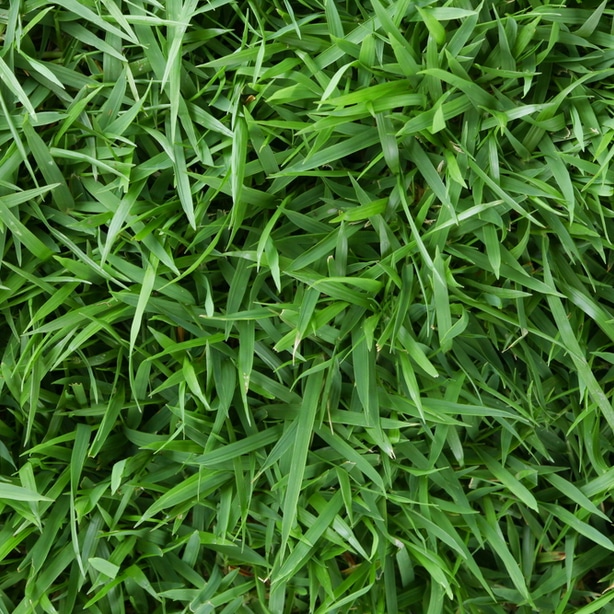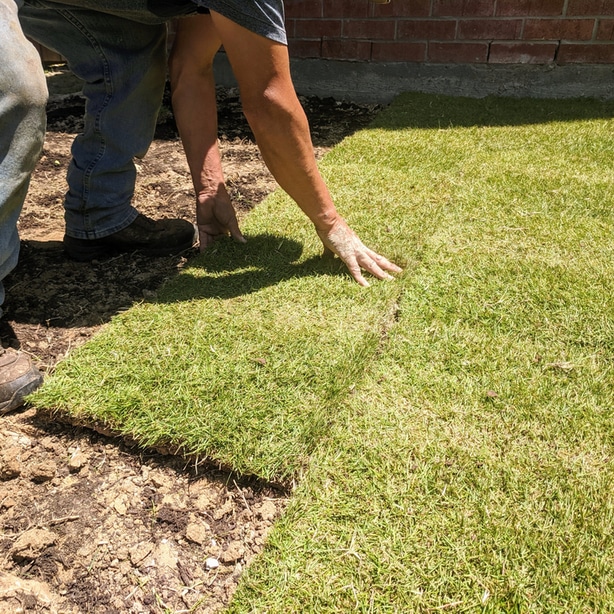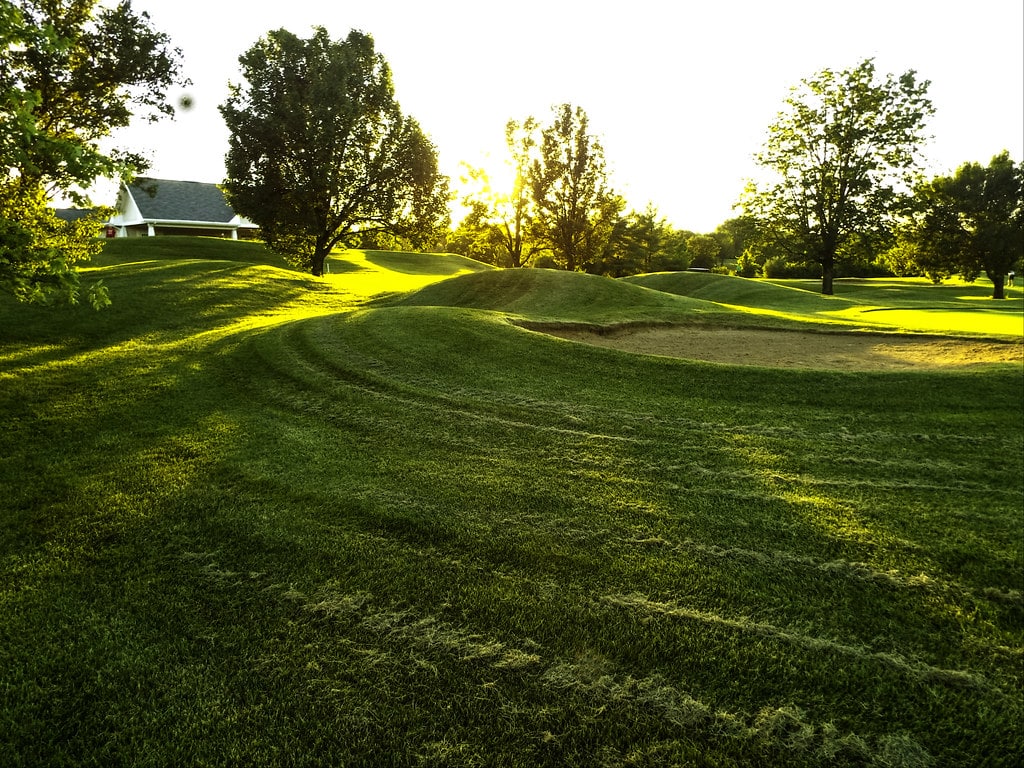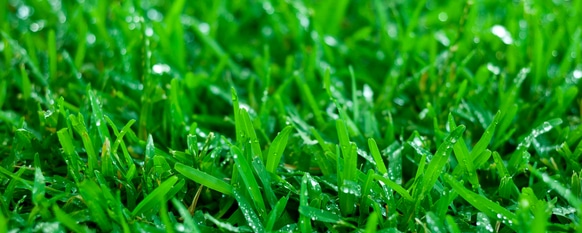This popular warm season grass looks just as good in a residential landscape as it does on a golf course. And, although it has a few specific care requirements in order to look its best, zoysia grass requires less water, fertilizer, and maintenance than other grasses in the warm climates where it thrives.
It offers attractive foliage, deep green color, shade tolerance, loves the heat, and holds up to heavy foot traffic. It grows dense blades that naturally suppress weeds. Its deep root system conserves moisture and provides a high degree of drought tolerance.
Read on to learn more about establishing and maintaining a beautiful zoysia lawn.
If you are looking to have a beautiful property, you will also want to make sure your trees are in great health. We have many articles about tree care here on the Green Pinky. For instance, check out everything you need to know about Hickory Trees.

General Information
Zoysia actively grows during the spring, summer, and fall seasons when daytime temperatures consistently rise above 80 degrees. In cool winter weather the grass enters dormancy, and the color changes from green to tan.
The long, warm growing season and short, mild winter in the Southeast, Southern, and Southwestern regions of the United States are ideal climates for this grass type. It also grows well within a transition zone that runs roughly from Kansas to North Carolina, although longer winters mean the grass stays dormant more of the year. Further north, the winters are too cold for this heat lover.
Like other warm season grass types, it is a sun lover. However it boasts a higher degree of shade tolerance than the others. Fine bladed cultivars, including Emerald, Zeon, and Geo, are the most shade tolerant types, as they thrive with as little as four to six hours of direct sunlight. They also tend to exhibit a deeper shade of green and somewhat slower growth rate than other zoysias.
Medium-coarse bladed cultivars like Meyer, El Toro, Empire, JaMur, and Zenith exhibit some shade tolerance as well, but need at least 5 hours of direct sunlight. They are best known for their improved cold tolerance and rapid growth rates.

Installing a New Lawn
If you’re planning to install a new zoysia lawn, you can start from seed, grass plugs, or sod. Seeds and plugs grow slowly, but cost less than sod up front.
Plant grass seeds or plugs early in the active growing season so that they have plenty of time to grow deep roots before winter dormancy. It typically takes two full growing seasons to see full coverage on a seeded zoysia lawn.
Because of its slow rates of seed germination and early growth, the easiest and most popular way to establish new zoysia turf is with sod. Sod roots quickly, and offers an immediate, dense coverage that inhibits weed growth and eliminates soil erosion.

Proper Mowing
Mowing is the primary maintenance requirement for grass. Whether you do it yourself or hire a contractor to do it for you, doing it correctly helps to ensure a healthy, beautiful, trouble-free yard.
Start with the right equipment. Although a rotary mower with sharp blades can work for some types of zoysia grass, the soft, thick foliage dulls blades quickly and bogs down the engine if it grows slightly taller than normal. For best results use a reel mower. Reel mowers offer a consistently cleaner, more precise cut that looks great and significantly reduces disease spread.
Maintain the height between one and two inches tall throughout the growing season. Mow frequently enough to remove only about 25 percent of the height each time. Timing will vary based on the growing conditions and the grass height. Keeping the grass shorter requires more frequent mowing.
As the blades turns tan in the autumn, continue to mow at the same height until it finally stops growing. When mowing time approaches in spring, make the first cut slightly shorter than normal to make way for fresh green growth.
With consistent mowing at the proper time, there is no need to bag the clippings. Up to 30 percent of the nutrient requirements will be satisfied by simply mulching the clippings and discharging them back onto the lawn.

Weeds will inevitably pop up on your lawn. Learn how to identify nutsedge, one of the most annoying weeds of all, and how to get rid of it.
Water Wisely
The right amount of water is essential to the health and appearance of a zoysia lawn. Too little and the grass turns brown. Too much leads to pest and disease problems.
An established zoysia lawn needs between a half inch and one inch of water per week during the growing season. This total includes irrigation and rainfall combined.
Avoid fungal disease problems by watering deeply but infrequently, and by watering early in the morning. Early morning watering reduces the amount of time the foliage stays wet, which slows the possible spread of disease spores. It also reduces water loss to evaporation, ensuring that the water you apply actually soaks into the ground.
When you water, use a rain gauge to measure the amount. If you use an automatic sprinkler system, consider installing a rain sensor that can bypass programmed irrigation cycles.
Optimize Fertility
In late spring, when the grass is halfway through its transition from tan to green, it’s time to feed the lawn.
Zoysia lawns use about two pounds of nitrogen per thousand square feet annually. The soil in every lawn is different, however, and it’s best to submit a soil sample to your local Extension Service for testing before applying fertilizer. The soil test results will show a detailed analysis of the current pH, macro and micro nutrient levels, and organic content of the soil. It will also provide instructions on the amount of fertilizer you’ll need to apply.
Correcting the soil acidity is an essential component of overall plant nutrition. When the soil is out of the ideal pH range, grass cannot uptake existing nutrients efficiently. Apply lime to raise the soil pH, or aluminum sulfate to lower it, as recommended by the soil test.
Then apply fertilizer. Choose the product that best fits your lawn’s needs. Slow release lawn fertilizer with supplemental iron is ideal for most zoysia lawns.

Eliminate Pests
Zoysia is susceptible to brown patch fungus in the summer, when the combination of heat and humidity are favorable.
The best way to prevent disease problems is by providing the right growing environment and adopting good management practices. Prune landscape trees and shrubs as needed to ensure adequate sunlight exposure and air circulation. Water early in the morning, and only as often as necessary. Only mow when the grass is dry.
Occasionally lawn fungus will attack the lawn even with the best of care. If brown patch fungus is actively present, indicated by spreading and merging brown patches bordered by a yellowish “smoke ring,” treat the lawn with lawn fungicide. Do not fertilize at this time. Mow normally, but bag the clippings in the affected area and dispose of them to reduce the spread.
One insect that sometimes causes damage to zoysia is the chinch bug. Chinch bug damage looks similar to drought damage, but it progresses from one area of the yard to another as the bugs feed. Upon inspection of the boundary between damaged and healthy grass, you’ll find the small black bugs moving around and feeding near soil level. These bugs love drought conditions, so an early infestation may be abated with irrigation, up to 1 inch of water per week. Otherwise consider treating with either a granular or liquid insecticide.
An actively growing lawn with adequate sunlight, water, and nutrients typically resists problems, leaving the owner with not much to do besides mowing. Zoysia is one of the most sought after warm season grasses because of its beauty and durability. Although it requires some specialized care, it consumes less water and fertilizer than other types. With proper care and maintenance, zoysia could be the closest thing to a perfect lawn grass.
Happy Gardening!

